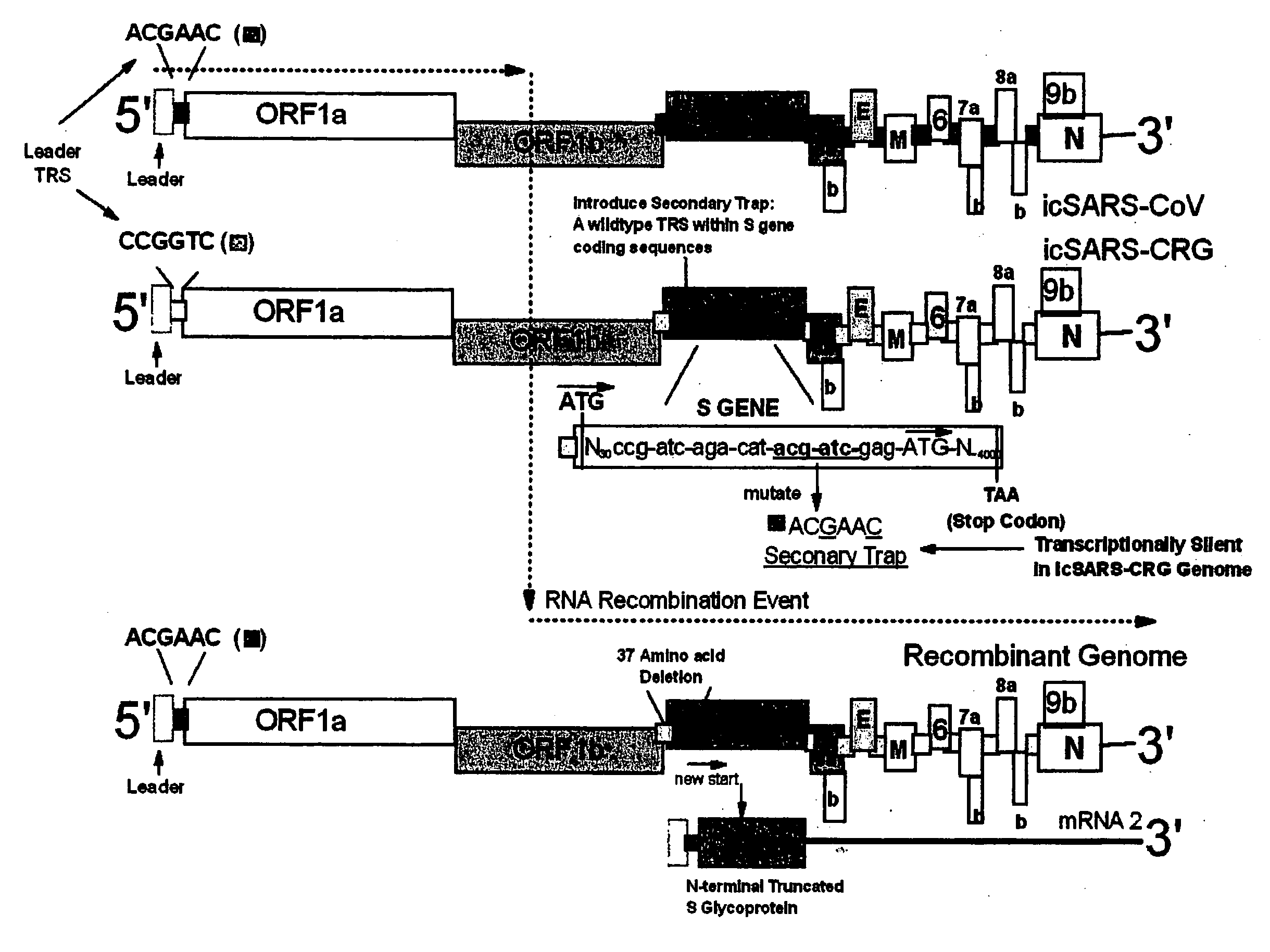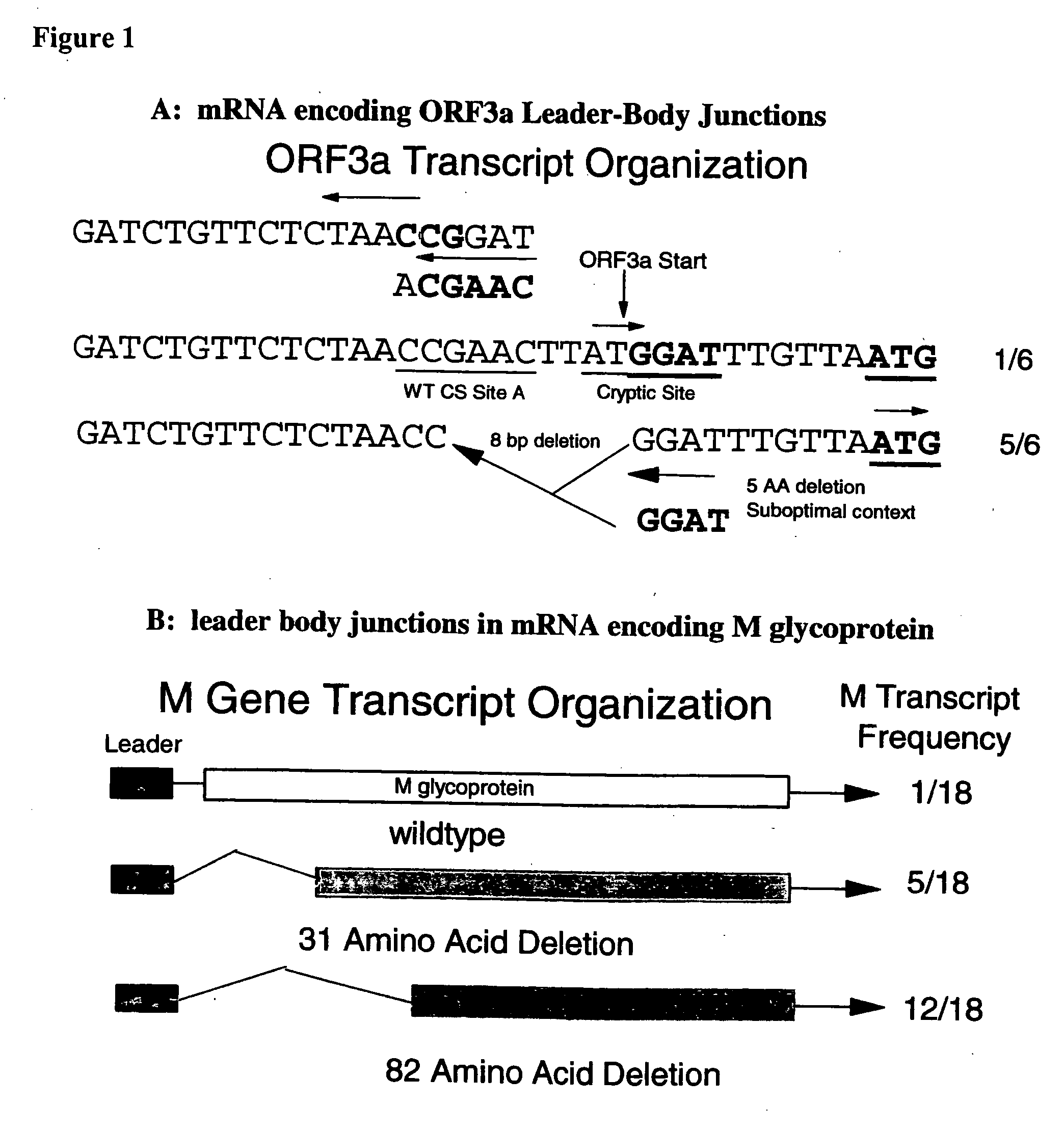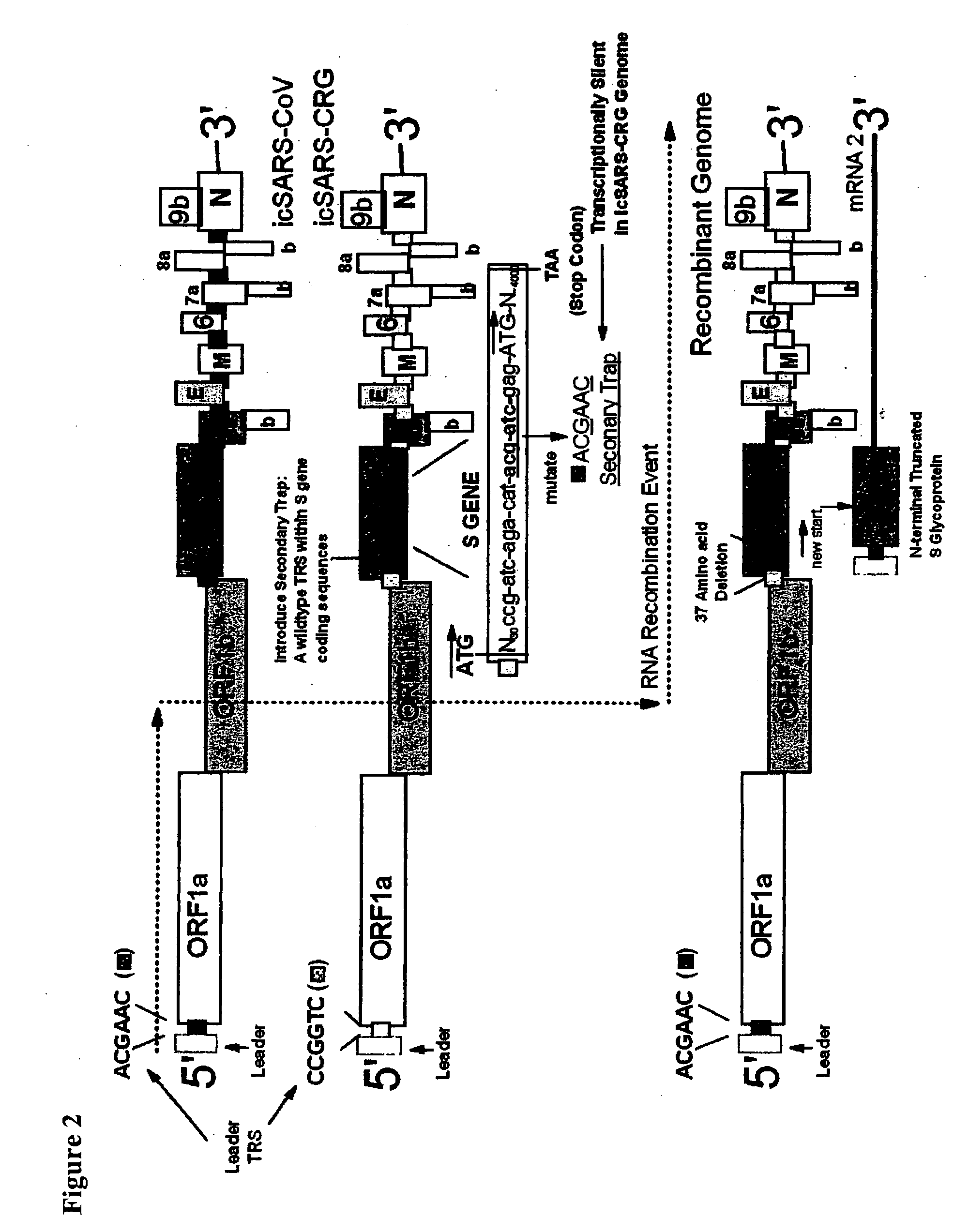Methods and compositions for infectious cDNA of SARS coronavirus
a technology of coronavirus and infectious cdna, which is applied in the field of compositions of infectious cdna, can solve the problems of no effective antiviral treatment of sars coronavirus, and achieve the effect of improving the antiviral effect of sars coronavirus
- Summary
- Abstract
- Description
- Claims
- Application Information
AI Technical Summary
Benefits of technology
Problems solved by technology
Method used
Image
Examples
example 1
Production of Full-Length Infectious cDNA of SARS Coronavirus
[0128] Virus and Cells. The Urbani, Tor-2 and Tor-7 Canadian strains of SARS-CoV were propagated on VeroE6 cells in Eagle's MEM supplemented with 10% fetal calf serum and kanamycin (0.25 μg / ml) and gentamycin (0.05 μg / ml) at 37° C. in a humidified CO2 incubator (Tor isolates were kindly provided by H. Feldmann). For virus growth, cultures of VeroE6 cells were infected at a multiplicity of infection (MOI) of 5 for 1 hr and samples were titered by plaque assay. At 1 hr postinfection, some cultures were treated with the cysteine protease inhibitor E64-d ({2S, 3S}-trans-epoxysuccinyl-L-leucylamido-3-methylbutane ethyl ester) at a concentration of 500 μg / ml. Virus plaques were visualized by neutral red staining at 2 days postinfection.
[0129] Strategy for Cloning the SARS-CoV cDNAs. Reverse transcription was performed using Superscript II™, oligodeoxynucleotide primers and intracellular RNA from SARS infected cultures [17, 18]...
example 2
Development of SARS Virus Single Hit Replicon Vector Vaccines
[0143] SARS Replicon Particle Assembly. Viral replicon particles are single hit vectors that are incapable of spreading beyond the site of initial infection and are novel vaccine candidates for human and animal diseases. The SARS single hit replicon particles will be produced in the helper cells as described herein. Specifically, the SARS E, M, S and / or N structural proteins will be produced in helper cells from helper RNA or DNA, e.g., VEE VRPs, noncytotoxic Sindbis virus replicons, BAC or vaccinia vectors, CMV eukaryotic expression plasmids, etc., using standard protocols in order to provide SARS coronavirus structural proteins in trans for assembly of coronavirus replicon particles in helper cells. The SARS E, M, S and / or N coding sequences will be deleted from the replicon RNA and one or more heterologous coding sequences will be inserted into the replicon RNA. The replicon RNA will be packaged into coronavirus partic...
example 3
Deletion of SARS Virus Group Specific ORFs
[0155] The SARS virus genome encodes several group specific ORFs at the 3′ end of the genome including ORFs 3a / b (X1, X2), 6 (X3), 7a / b (X4), 8a / b (X5) and 9b. By analogy with other coronaviruses, it is believed that one or more of these group specific ORFs encode luxury functions that do not specifically contribute to virus replication in vitro but disable virus pathogenesis in vivo. This invention includes the systematic and combined deletion or knocking out of expression of these various ORFs and rescue of the molecularly cloned viruses containing these genetic lesions. All recombinant viruses are obtained following transfection in Vero cells similar to those certified for cultivation and production of human virus vaccines.
[0156] Protocols are carried out wherein the group specific nucleic acid sequences designated ORFs 3a / b, 6, 7a / b, 8 and 9a are deleted. Initially, each of the ORFs is systematically deleted, either by deletion of indi...
PUM
| Property | Measurement | Unit |
|---|---|---|
| Immunogenicity | aaaaa | aaaaa |
Abstract
Description
Claims
Application Information
 Login to View More
Login to View More - R&D
- Intellectual Property
- Life Sciences
- Materials
- Tech Scout
- Unparalleled Data Quality
- Higher Quality Content
- 60% Fewer Hallucinations
Browse by: Latest US Patents, China's latest patents, Technical Efficacy Thesaurus, Application Domain, Technology Topic, Popular Technical Reports.
© 2025 PatSnap. All rights reserved.Legal|Privacy policy|Modern Slavery Act Transparency Statement|Sitemap|About US| Contact US: help@patsnap.com



